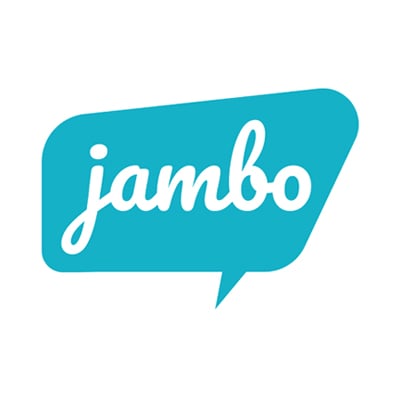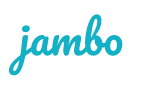
There's no denying that managing a stakeholder engagement program (or programs!) can be overwhelming. If you are seeking to make the process more collaborative, efficient, and scalable, then Stakeholder Relationship Management (SRM) software is an incredibly valuable tool.
A quality SRM connects all your stakeholder engagement information in one platform, simplifying and streamlining how you and your team manage your stakeholder engagement projects or programs.
However, not every SRM is designed or supported in the same way. Software that works for one organization may not be the right option for another, so it's essential to take the time to review and select the best Stakeholder Relationship Management software for your organization.
Not sure what an SRM is? Check out our comprehensive SRM guide →
Four tips for choosing Stakeholder Relationship Management (SRM) software
The following are four tips to consider when selecting an SRM software:
Tip 1: Choose software made for managing stakeholders and stakeholder engagement
To simplify your stakeholder engagement process, look for an SRM specifically designed to manage stakeholders and stakeholder engagement. (It's an easy mistake to make, but an SRM is different from a CRM, which is made for managing customers and sales. We explain this in more detail here.)
An SRM built with stakeholder-focused workflows designed specifically for managing stakeholder information and engagement efforts is the best option for helping you reach your goals.
What to look for:
- Stakeholder-focused: Look for software that helps you record your stakeholder communications in a way that allows you to clearly understand the essential information about your stakeholders and the communications you've had with them. A quality SRM will allow you to record communication records by stakeholder name and organization, as some stakeholders may be associated with multiple organizations, such as communities, governments, companies, or associations.
The SRM should offer a straightforward space to log the following stakeholder information:- Stakeholder contact profiles
- Stakeholder communications
- Stakeholder issues
- Stakeholder commitments
- Dashboard: The dashboard should offer helpful analytics and be organized so that you and your team can quickly view metrics that illustrate important project insights, such as risk profiles for stakeholder issues or the top communication tactics being used to contact stakeholders.
- Reports: Look for an SRM that can run a variety of reports. Insights gained from reporting capabilities are essential to effectively managing your stakeholder information. You need to be able to report on stakeholders, issues, commitments, the history of engagement, and other relevant information. Additionally, if you ever need to produce a report that illustrates the entire history of engagement that has occurred, ensure your SRM can handle this type of report in an easy-to-understand format.
- Traceability: Select software that displays connections between communications, issues, commitments, and tasks. This ability enables you to fully understand your stakeholders and their projects. A quality SRM can help with project traceability by allowing you to easily show the steps your team took to resolve a stakeholder issue.
Tip 2: Choose software that makes collaboration easy
Keeping your team on task and up to date is critical to running a successful stakeholder engagement program.
User-friendly SRM software, designed with collaboration in mind, will make it easy to understand who your team is talking to, how they have been engaging, and what has been said or promised, without having to send an email to find out.
What to look for?
- Cloud-based software: An effective SRM must be cloud-based, allowing it to be accessed on demand anywhere in the world with internet access. Changes are virtually instant, so you and your team don't have to wait until you're in the office to log a communication record, and those in the office can view the updates in real-time.
- Tasks: Look for an SRM that allows you to assign tasks to your team to help keep everyone on the same page. Additionally, look for an SRM that enables you to track when tasks are completed, improving team transparency and accountability.
- Easy to use: Choose an SRM built with the end-user in mind. Does it look easy to use and learn? Will it make your job easier? If the software is clunky or complex, adoption rates will be low, and ultimately, the software will fail to meet its objectives.
Tip 3: Choose future-focused software that values user input
The right SRM should be ready to meet most of your organization's needs. However, you may have some unique needs that aren't currently solved with software (remember, no software will be the perfect fit). When choosing an SRM vendor, consider whether the software is scalable to grow with your business and whether the vendor is actively updating its current software offering.
What to look for?
Does the SRM vendor explain (on the website or during the demo) how its software helps meet your industry's needs or challenges? Do they seem innovative and open to your input regarding feature updates or development?
- Scalability: Will the software handle the number of users you need to have access to? Can you increase the number of users or projects during your subscription term? Ensure the SRM can grow in tandem with your business.
- Updates: Some SRMs remain unchanged or are not updated. Stakeholder engagement is a growing and evolving industry, so find out if your SRM vendor continually updates its software with new features that align with the increasing expectations of stakeholder engagement. Ask how often they plan on rolling out new releases so you can set your expectations accordingly.
- Product roadmap: Is there a vision for the product's future? Can users submit ideas for new features?
Tip 4: Select software that helps limit risk
In stakeholder engagement, inevitable risks can potentially affect your project and your organization's success.
Risk 1
- Information management: There is a risk of losing data when staff have no central storage system or if they leave your project or organization. Data stored in various locations, such as personal desktops, USB drives, or emails, results in data gaps and inconsistent records.
What to look for:
- A cloud-based SRM so all your data is saved in one accessible and searchable location. Ask the SRM vendor if you can still access a user's data even if their user account is removed.
Risk 2
- Managing confidential stakeholder information: Stakeholder engagement and consultation projects often involve confidential personal information and/or sensitive project data.
What to look for:
- Look for an SRM vendor that employs security best practices, such as data encryption, firewalls, and options like multi-factor authentication (MFA) or single sign-on (SSO). Also, look for an SRM that has user-based permissions. This feature enables you to assign different levels of access to other users, allowing you to restrict access to specific data.
Risk 3
- Illustrating the engagement: Can you easily pull your data to explain the history of engagement and consultation with one or many stakeholders over an extended period? If you can't, you will face problems later.
What to look for:
- An SRM with comprehensive reporting capabilities. Ask the SRM vendor to show you what a report of this kind would look like. Is it easy to understand?
Risk 4
- Forgetting stakeholder commitments: Missing even one commitment can escalate quickly, resulting in detrimental backlash and the loss of vital stakeholder trust and essential relationships.
What to look for:
- An SRM with a dedicated commitments management module enables you to monitor commitments from initiation to fulfillment, providing summaries that offer valuable insights, such as the number of commitments by type, status, stakeholder, or financial amount.
Risk 5
- Owning your data: Your data is an asset, both to your organization, your project's success, and your stakeholder relationships. When your project or engagement program ends, can you get a copy of your data?
What to look for:
- An SRM vendor that will allow you to export your data if you decide to leave after your subscription term ends.
Next steps for choosing SRM software
Talk with your team and gather their opinions on what they would like to see in SRM software. Discuss how an SRM can help make their job easier and what weaknesses in the current stakeholder engagement management efforts could be eased with software.
List all your must-haves and nice-to-haves, and research your SRM software options. We always recommend signing up for a demo to see the SRM you're evaluating in action, as this is the easiest way to visualize its use within your organization.
You can always reach out to SRM vendors directly to talk about your questions, concerns, and challenges. They should be happy to speak with you and help you complete your software evaluation checklist.
Questions? The Jambo team is here to help!








